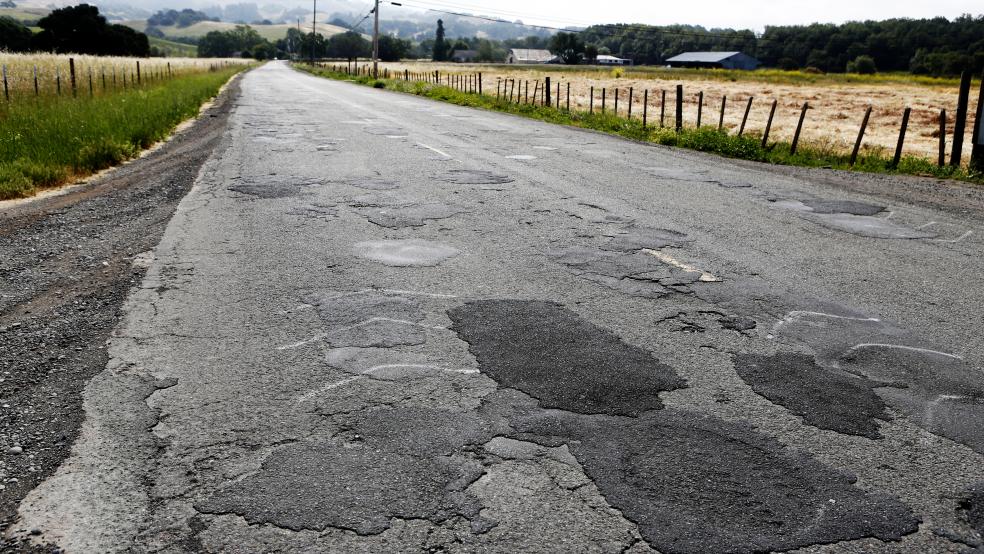Congress ended weeks of contentious negotiation Tuesday, agreeing to a five-year transportation bill that will boost spending on roads and transit systems by billions of dollars each year.
In its first year, the approximately $300-billion bill increases spending on highways by $2.1 billion above current levels. By the final year, in 2020, the bump will be $6.1 billion above the about $50 billion that has been spent in recent years.
Spending on transit will go from the current $8.6 billion to almost $10.6 billion in 2020
“I’m proud. I’m relieved. We are in dire need of this,” said Sen. Barbara Boxer (D-Calif), the ranking member of the Senate Environment and Public Works Committee, which provided the fulcrum to get the bill through the conference committee. “It will result in millions of jobs over the period of the bill, and they can’t be outsourced. They have to be done in America.”
Related: Congress moves a step closer to passing transportation bill
Boxer said that meshing very different House and Senate bills was a messy process that would make the workings of a sausage factory look appealing by contrast.
The long-sought bill protects funding for transit from those who argued it should be cut loose from the highway bill, increases money for pedestrian and bicycle programs that also have come under attack and it includes nearly $200 million to speed installation of a critical railroad safety feature known as positive train control.
Approval of the bill, which will go to the White House for the president’s signature this week, also lays to rest for five years the question of how to pay for transportation. The bills arrived in the conference committee with very different funding provisions. The committee settled primarily on a House plan to use money that the Federal Reserve Bank uses as a cushion against losses and a Senate proposal to reduce the amount of interest the Federal Reserve pays to banks.
The bill restores what once was the natural order of things in transportation, setting the game plan and funding levels for several years and ending the herky-jerky process of funding extensions that were the order of the day for the past 10 years.
In addition to increasing spending for roads and transit, the bill increases funding for freight transportation and creates a grant program for freight; restricts rental car leasing of recalled vehicles; bumps up to $295 million the cap on liability claims faced by railroads; triples the amount that the National Highway Safety Administration can level in civil fines; and continues the popular Transportation Infrastructure Finance and Innovation Act (TIFIA) program. It also includes a measure that reauthorizes the U.S. Export-Import Bank.
The bill is a landmark moment for a Congress that is reviled by many Americans as a do-nothing body, most notable for the bitter fighting between its most extreme elements. But even in this week’s success, there is failure. Once again, the lawmakers have not found transportation’s holy grail, a renewable source of cash to fund the nation’s needs.
Related: With a Friday deadline looming, Congress punts on transportation
The need to get from place to place — on foot or by vehicle — stands virtually alone in the degree to which it touches everyone from infancy to old age. The universal desire of people to get around has made adequate transportation a goal that transcends political parties and appeals to extremes at either end of the spectrum.
But even in its success — and the word “bipartisan” was ever-present in the aftermath of the compromise — the failure to find a long-term way to pay for transportation revealed a deep schism in Congress.
There are both philosophical and ideological differences.
On the former, should the money be found through a user tax, like the gas tax or a tax on the number of miles driven? Can long-term funding be found by bringing home billions in taxable income that corporations have stashed off shore? Should there be a turn away from a transportation-only funding source like the gas tax toward using income taxes and other taxes to pay for transportation?
In the gray area between philosophical and ideological there hang a couple of issues. Should money to pay for transit systems come from revenue collected mostly from drivers who pay a gas tax? Should those same user-fee dollars be spent on bike and pedestrian needs, or what detractors like to call “landscaping” for roadways?
On the ideological side the path to finding a funding solution gets more thorny.
A key reason that the House opted not to raise the gas tax — despite outspoken support for an increase from the U.S. Chamber of Commerce, the American Automobile Association, labor unions and truckers — was the pledge that some members have made to never raise taxes on anything.
Another belief deeply held by some members, particularly among Tea Party Republicans, is that the federal government should be less involved in transportation.
Leaving all or most of it to states, these smaller-government advocates argue, would let states set their own priorities, allow them to decide whether to fund non-roadway items like transit and pedestrian projects, eliminate federal regulations which they believe cause costs to increase, and let states collect and spend their own money on their own projects.
The bill that moved from the conference committee Tuesday includes provisions intended to promote development of alternatives to the 18.4-cent gas tax which no longer provides sufficient cash to pay for transportation.
Boxer, who credited close collaboration with Senate Environment and Public Works Committee Chairman Jim Inhofe (R-Okla.) for getting the job done, said the process was so bruising that it provided motivation to find a more permanent funding solution.
“This was a painful process,” Boxer said. “The transportation bill is a huge priority for both parties. Therefore I do think that we’re going to figure this out.”
This piece was originally published at The Washington Post. Read more at The Post:




